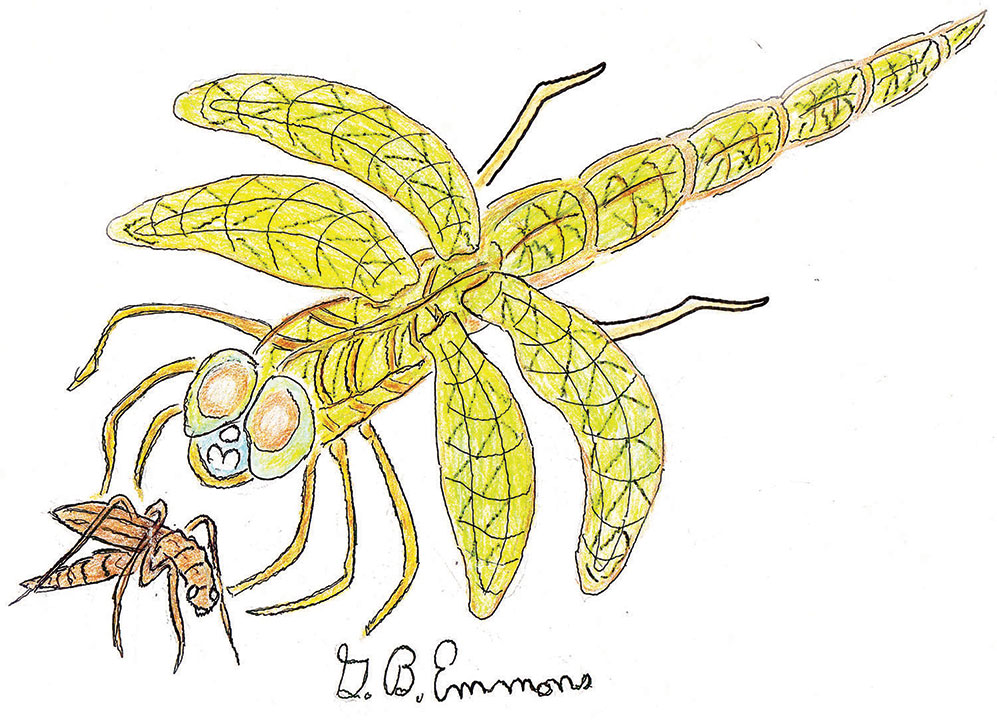Fossils of dragonflies date back to 300 million years on Earth, and today the insect is found on every continent of the world.
Using the name “dragon” for an insect may have come from the myth that they were once dragon-like creatures during the time of the dinosaurs. In Japan, the Samurai warriors saw them as warrior spirits of agility, power, and victory. In China, they were a symbol of prosperity, harmony, and domestic fortune as food. To Native Americans, they were a totem of success, speed, and purpose of flight, as if a living spirit of the wind itself.
In New England, four indigenous species prevail along waterside coastlines of both salt and fresh water inlets, lakes, and ponds. The largest, about two-and-a-half inches long, is the Green Darner dragonfly in my illustration about to eat a summer mosquito. Mosquitos are the favorite prey of the dragonfly’s insect diet, making them both beneficial and detrimental as infectious disease carriers to humans.
The dragonfly has four wings, each of which can be folded back and adjusted to fly in any one of six different directions evasively, and back and forth like a darning needle. Amish farmers warned children telling lies that their lips could be sewn up by what was called the Devil’s dragonfly.
There is a similar but smaller cousin to the dragonfly, the damselfly, with swept back wings that are less effective in predation.
Dragonflies mate in flight, holding each other in a circular embrace from head to toe, flying in tandem for insemination and propagation. The female then will lay several thousand fertilized eggs on or near the surface of the water, usually on a split leaf of an underwater plant. They will, in about a week, begin to hatch as aquatic nymphs called larvae, not to take flight until the water purity conditions are favorable. Consequently, most of the dragonfly’s life is initially underwater.
Now the autumn migration of adults has already been orchestrated, like waving a magic wand of a frost line southward along the Atlantic flyway. Like the Monarch butterfly, the dragonfly uses the position of the sun in the sky as a guide, with an inner clock to compensate its position in the Earth’s rotation. Dragonflies also stage up at Cape May, New Jersey to cross the Chesapeake on their way to Florida and beyond. They are estimated to move in clouds of hundreds of thousands for safety in numbers in passage.
Like Rachael Carson’s book on the detriments to the environment, Silent Spring, intended to save the hatching of bird eggs from sterilization of insecticides, so may my article appeal to you as a reader to encourage environmentally-friendly means of addressing issues of nature that face us, such as mosquito control; for example, the effective method of supplying thousands of dragonfly larvae to the standing water of communities has been developed and is becoming available. Saving, even if only a few, the once-upon-a-time mythical and now mortal benefactor to mankind was the inspiration for my narration and drawing I call “Not to Slay a Dragonfly.”
By George B. Emmons
